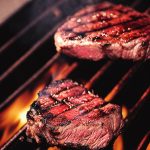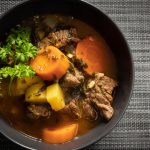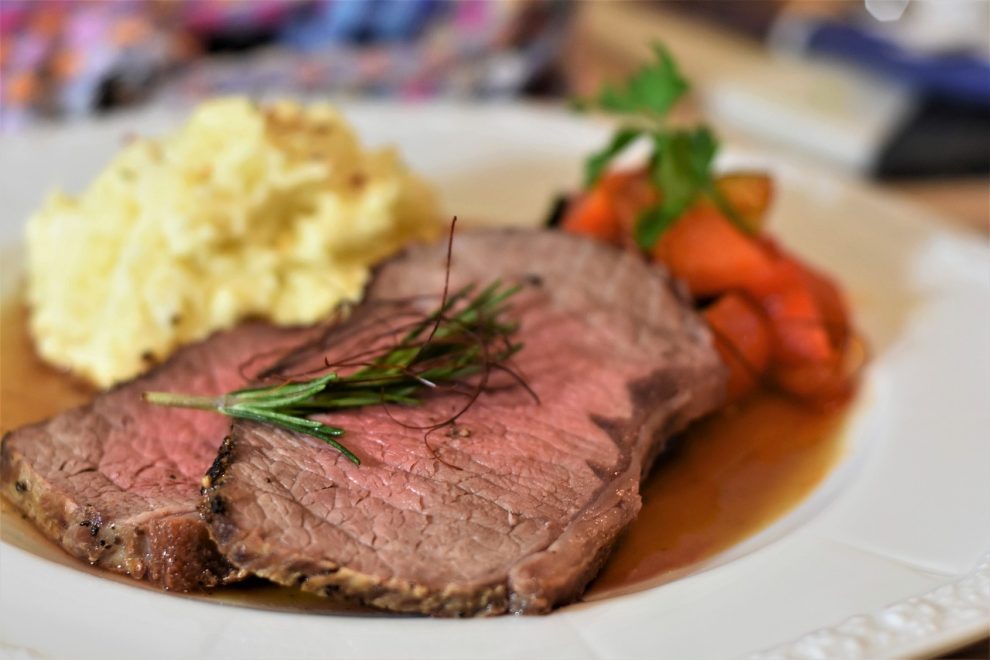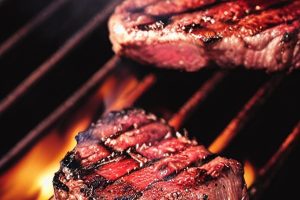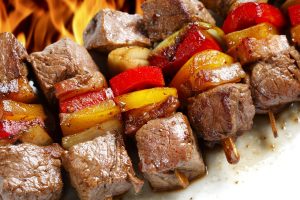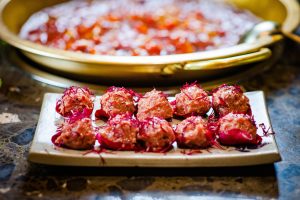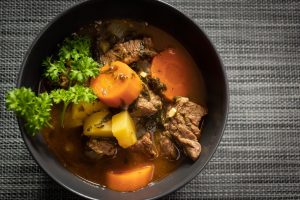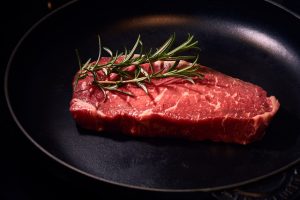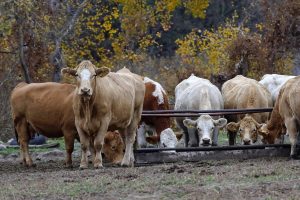“From Ancient China to Modern Palates: Tracing the Origins of Moo Shu Beef”
Moo Shu Beef, a classic dish commonly found in Chinese restaurants worldwide, has a rich history that dates back to ancient China. This delectable dish, known for its tender beef, crisp vegetables, and savory sauce, has evolved over time to suit modern palates. Tracing the origins of Moo Shu Beef provides insight into the culinary traditions of ancient China and the cultural influences that have shaped it into the beloved dish it is today.
The roots of Moo Shu Beef can be traced back to the northern regions of China, where it first gained popularity during the Han Dynasty (206 BC – 220 AD). During this time, the dish was prepared using pork, as beef was not commonly consumed in Chinese cuisine. The original name of the dish, “Moo Shu Rou,” literally translates to “wood-shaved pork,” referring to the thin slices of pork cooked over a wood fire.
As the centuries passed and culinary practices evolved, beef gradually found its way into Chinese cuisine. This shift occurred during the Ming Dynasty (1368-1644), when beef became more widely available due to the increased trade along the Silk Road. The addition of beef to Moo Shu Beef introduced a new level of richness and flavor, making it a more satisfying and sought-after dish.
The modern version of Moo Shu Beef that is popular today emerged during the Qing Dynasty (1644-1912). This era saw the introduction of several new ingredients and cooking techniques. The dish became more refined, with the addition of eggs, mushrooms, and various vegetables such as cabbage, carrots, and bamboo shoots. These ingredients not only added texture and flavor but also enhanced the visual appeal of the dish, making it more visually enticing.
The cooking technique used in preparing Moo Shu Beef is an essential aspect of its distinctive taste. The dish is traditionally cooked in a hot wok, which allows for quick and even cooking. The meat is stir-fried until tender, and the vegetables are added shortly after, ensuring they retain their crispness. A sauce made from soy sauce, hoisin sauce, and other seasonings is then added to enhance the flavors and bind the ingredients together.
Moo Shu Beef’s popularity has spread beyond China and gained international acclaim. It has become a staple in Chinese-American cuisine and is a favorite among Western diners. This adaptation has resulted in minor modifications to suit modern palates, such as the inclusion of additional vegetables like bell peppers and the use of flour tortillas instead of traditional Chinese pancakes.
In conclusion, tracing the origins of Moo Shu Beef reveals a fascinating journey from ancient China to modern palates. This dish has stood the test of time, adapting and evolving to suit changing tastes and culinary practices. Its rich history and cultural significance make it a beloved and enduring part of Chinese cuisine, enjoyed by people around the world.
“A Taste of Tradition: Uncovering the Culinary Heritage of Moo Shu Beef”
Moo Shu Beef, a classic Chinese dish that has become a staple in many Westernized Chinese restaurants, holds a rich culinary heritage that reflects the traditions and flavors of ancient China. This article aims to uncover the origins and techniques behind this delectable dish, showcasing its importance in Chinese cuisine.
The roots of Moo Shu Beef can be traced back to the northern regions of China, where it was originally known as “moo shu rou” or “wood-shaved pork.” This name was derived from the traditional method of preparing the dish, which involved thinly slicing pork and stir-frying it with various vegetables, mushrooms, and seasonings.
Over time, the dish evolved to include beef as an alternative protein option. The combination of tender beef and crisp vegetables quickly gained popularity, leading to the creation of Moo Shu Beef as we know it today. It is important to note that the term “moo shu” refers to the cooking technique of stir-frying thinly sliced meat with vegetables, rather than a specific ingredient.
The preparation of Moo Shu Beef involves a meticulous process that highlights the precision and skill of Chinese chefs. First, a marinated beef is sliced into thin strips, ensuring that each piece is uniform in size. The beef is then quickly seared in a hot wok, resulting in a caramelized exterior and a juicy, tender center. This initial step adds a depth of flavor to the dish, creating a savory base for the remaining ingredients.
Next, a medley of vegetables, such as cabbage, carrots, and mushrooms, are added to the wok. These vegetables are carefully selected for their ability to retain their crunch and complement the beef’s robust flavors. The stir-frying process allows the vegetables to maintain their vibrant colors and fresh textures, adding visual appeal to the dish.
To further enhance the taste of Moo Shu Beef, a combination of soy sauce, hoisin sauce, and other traditional Chinese seasonings are added. These condiments provide a harmonious balance of sweetness, saltiness, and umami, elevating the overall flavor profile of the dish. The seasonings are carefully measured to ensure consistency and authenticity, honoring the culinary heritage of Moo Shu Beef.
Traditionally, Moo Shu Beef is served with Mandarin pancakes, which act as a vessel for the flavorful filling. These thin, delicate pancakes are made from a simple dough that is rolled out, cooked on a hot griddle, and then carefully separated into individual layers. The pancakes are soft and pliable, providing the perfect vehicle for wrapping the beef and vegetable mixture.
The final presentation of Moo Shu Beef is a work of art. The dish is typically served with a side of hoisin sauce, allowing diners to add an extra layer of sweetness to their taste preference. The vibrant colors of the stir-fried beef and vegetables, combined with the softness of the pancakes, create an aesthetically pleasing and appetizing dish.
In conclusion, Moo Shu Beef is not just a delicious Chinese dish; it is a reflection of the culinary heritage of China. Its origins in northern China, the meticulous preparation techniques, and the traditional flavors all contribute to its status as a classic Chinese favorite. Whether enjoyed in a restaurant or homemade, Moo Shu Beef offers a taste of tradition that is sure to delight any culinary enthusiast.
“The Evolution of Moo Shu Beef: Exploring its Historical Roots”
Moo Shu Beef, a popular Chinese dish characterized by its savory flavors and combination of tender beef, fresh vegetables, and delicate pancakes, has a rich and fascinating history that spans centuries. In order to fully appreciate the evolution of this delectable dish, it is essential to explore its historical roots.
The origins of Moo Shu Beef can be traced back to the northern regions of China, particularly the Shandong province, during the Ming Dynasty (1368-1644). During this time, the dish was known as “jian bing,” which translates to “fried pancake.” Initially, it was a street food commonly enjoyed by farmers and laborers who needed a quick and filling meal.
Over time, as the popularity of the dish grew, it underwent several transformations. One significant change occurred during the Qing Dynasty (1644-1912) when the dish made its way to the imperial court. The royal chefs refined the recipe, adding premium ingredients such as marinated beef, Shiitake mushrooms, and bamboo shoots, elevating the dish to new heights. It was during this period that the name “Moo Shu Beef” was first used to describe the dish.
The evolution of Moo Shu Beef continued into the 20th century when Chinese immigrants brought their culinary traditions to the United States. As Chinese communities began to flourish in cities like San Francisco and New York, the dish gained popularity among both Chinese Americans and the wider American population. To cater to the American palate, some modifications were made to the traditional recipe. For instance, the addition of scrambled eggs and hoisin sauce became common, providing a slightly sweeter and richer flavor profile.
In modern times, Moo Shu Beef has become a staple in Chinese restaurants around the world. Its versatility and delicious taste have made it a favorite among both Chinese cuisine enthusiasts and those new to Chinese food. Despite its long history and various adaptations, the essence of Moo Shu Beef remains true to its origins – a harmonious blend of flavors and textures that tantalize the taste buds.
In conclusion, the evolution of Moo Shu Beef is a testament to the rich culinary traditions of China. From its humble beginnings as a street food to its transformation into a beloved dish enjoyed in households and restaurants worldwide, this historical journey showcases the adaptability and creativity of Chinese cuisine. Whether you enjoy the traditional recipe or a modern twist, Moo Shu Beef continues to be a delicious representation of Chinese culinary heritage.
“From Imperial Courts to Local Kitchens: The Rich History of Moo Shu Beef”
Moo Shu Beef, a delicious and popular Chinese dish, holds a rich history that traces back centuries from the imperial courts to local kitchens. This article aims to shed light on the origins and evolution of this culinary masterpiece.
The story of Moo Shu Beef begins in the imperial courts of ancient China, where refined dishes were created to satisfy the discerning palates of emperors and their esteemed guests. During the Tang Dynasty (618-907 AD), a dish known as “Moo Shu Pork” was first introduced. This dish consisted of thinly sliced pork stir-fried with various vegetables, mushrooms, and seasonings. It was often served with delicate pancakes made from wheat flour.
Over time, the recipe for Moo Shu Pork made its way out of the imperial courts and into the kitchens of local Chinese households. As it gained popularity among the common people, variations of the dish began to emerge. One such variant was the substitution of pork with beef, resulting in the birth of Moo Shu Beef.
The evolution of Moo Shu Beef continued during the Qing Dynasty (1644-1912 AD), when it became increasingly popular among the general population. The dish was further refined, with the addition of additional ingredients such as bamboo shoots, wood ear mushrooms, and bean sprouts. These additions enhanced the flavors and textures of the dish, making it even more enticing.
During the early 20th century, Chinese immigrants brought their culinary traditions to the United States. As they settled in different regions, they introduced dishes from their homeland to local communities. Moo Shu Beef was no exception and quickly became a favorite in Chinese-American cuisine.
In Chinese-American restaurants, Moo Shu Beef is typically served with Mandarin pancakes and accompanied by hoisin sauce. The pancakes are thin and slightly chewy, providing the perfect vessel for wrapping the flavorful beef and vegetable mixture. Hoisin sauce, a sweet and savory condiment made from soybeans, garlic, sugar, and various spices, adds a delightful richness to the dish.
Today, Moo Shu Beef continues to be enjoyed by people around the world. Its rich history and evolution showcase the adaptability and creativity of Chinese cuisine. Whether it is served in the grand halls of an imperial court or in a humble local kitchen, this dish remains a testament to the cultural heritage and culinary expertise of the Chinese people.
In conclusion, Moo Shu Beef’s journey from the imperial courts to local kitchens is a testament to its enduring popularity and versatility. This informative article has highlighted the origins and evolution of this beloved Chinese dish, showcasing its rich history and cultural significance. From its humble beginnings in ancient China to its presence in Chinese-American cuisine, Moo Shu Beef has truly stood the test of time.
“The Cultural Tapestry of Moo Shu Beef: Unveiling its Historical Significance in Chinese Cuisine”
Moo Shu Beef is a popular dish in Chinese cuisine that has a rich cultural tapestry and a fascinating historical significance. Its roots can be traced back to ancient China, where it was initially created and enjoyed by the royal court. This informative article aims to unveil the historical importance of Moo Shu Beef in Chinese cuisine, shedding light on its cultural significance and the factors that have shaped its evolution over time.
Chinese cuisine is renowned for its diverse range of flavors, techniques, and ingredients. It has a deep connection with the country’s history, traditions, and cultural practices. Moo Shu Beef, also known as “Moo Shu Rou” in Mandarin, exemplifies this connection, as it has been an integral part of Chinese culinary heritage for centuries.
The origins of Moo Shu Beef can be traced back to the northern region of China, where it was first created during the Han Dynasty (206 BC – 220 AD). During this time, the dish was exclusively enjoyed by the imperial court and was considered a delicacy. It was prepared using the finest cuts of beef, which were marinated in a fragrant blend of soy sauce, ginger, garlic, and other spices.
The historical significance of Moo Shu Beef lies in its association with the royal court. It was often served at banquets and feasts, symbolizing wealth, power, and prestige. The dish was not only appreciated for its exquisite taste but also for its visual appeal. Moo Shu Beef was traditionally presented in a visually stunning manner, with the beef slices delicately arranged on a platter and garnished with vibrant vegetables and herbs.
Over time, Moo Shu Beef gradually made its way from the royal court to the general population. It became a popular dish among the common people, who adapted the recipe to suit their tastes and ingredients that were locally available. As a result, regional variations of Moo Shu Beef emerged, each with its own unique blend of flavors and ingredients.
In modern times, Moo Shu Beef has become a staple in Chinese-American cuisine, particularly in restaurants specializing in Mandarin or Szechuan dishes. The dish has evolved to include additional ingredients such as mushrooms, bamboo shoots, and scrambled eggs. It is usually served with thin pancakes or wraps, allowing diners to assemble their own rolls by filling them with the flavorful Moo Shu Beef mixture.
The cultural significance of Moo Shu Beef extends beyond its historical roots. It represents the fusion of flavors, techniques, and ingredients that define Chinese cuisine. It showcases the creativity and adaptability of Chinese chefs throughout history, as they have continuously modified and improved upon traditional recipes.
In conclusion, Moo Shu Beef holds a special place in Chinese cuisine due to its historical significance and cultural tapestry. From its humble beginnings as a royal delicacy during the Han Dynasty to its widespread popularity in modern times, Moo Shu Beef has evolved and adapted, reflecting the changing tastes and preferences of the Chinese people. Whether enjoyed in a traditional or modern context, this dish continues to embody the essence of Chinese culinary heritage.
